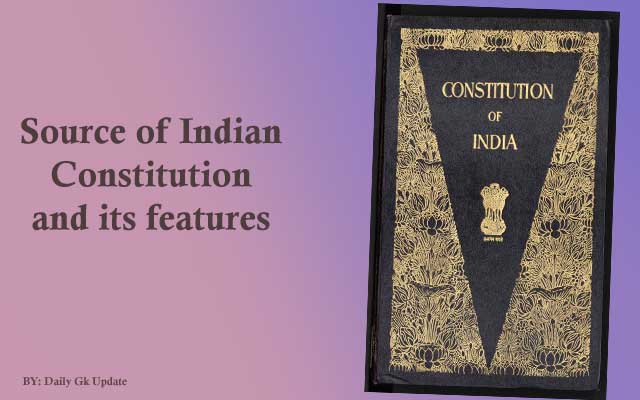Source of Constitution of India
The Constituent Assembly adopted the Constitution on 26th November 1949 and it came into effect on 26th of January 1950. The Indian Constitution is borrowed from almost all the major countries of the world but has its own unique features too. It took 2 year 11 month and 18 day to complete the making of our constitution. It is the largest written constitution of the world. The best things of all the major countries’ constitutions are borrowed and put into the Indian constitution.
The constitution of India was framed by the Constitution Assembly and Rajendra Parsad was appointed as the President of the Constitution Assembly. It was set up under the provision of the Cabinet Mission which came to India on 24 March 1946. Its aim was to help India to frame a constitution by themselves. The Constitution Assembly was set up on 6 December 1946 under the temporary chairman Sachidanada Sinha. And it was drafted by the Drafting Committee under the chairman of Dr. B.R. Ambedkar. And It almost took 2 year 11 month and 18 day to complete it. It was completed on 26 November 1949 and came into force on 26 January 1950 on the anniversary of the Purna Swaraj movement of 1930.

The main source of the Indian Constitution is the Government of India Act 1935. The Constitution of 1950 was a by-product of the legacy started by the Government of India Act 1935.
Major sources of Constitution:
Source Constitution | Features |
Government of India Act of 1935 |
|
British Constitution |
|
US Constitution |
|
Irish Constitution |
|
Australian Constitution |
|
Canadian Constitution |
|
French Constitution |
|
South African constitution |
|
Constitution of Germany |
|
Japanese Constitution |
|
Constitution of USSR (Russia) |
|
Some Question answers related to the source and formation of the Indian Constitution.
Qus: The Ideal of the Constitution originated in?
Ans: USA
Qus: The mother of the constitution is known as which country?
Ans: British Constitution
Qus: The Cradle of Democracy is ?
Ans: Greece
Qus: The longest written constitution in the World is?
Ans: Indian constitution
Qus: The shortest and the oldest written constitution in the world is?
Ans: American Constitution
Qus: When was the constitution of India adopted?
Ans: 26 November 1949
Qus: Who is known as the father of the Indian Constitution?
Ans: Dr. B.R. Ambedkar
Qus: Office of the Governor is borrowed from?
Ans: Government of India Act 1935.
Qus: Office of the CAG is taken from which constitution?
Ans: From the Britain’s Constitution.
Qus: The Ideal of Union and State List is taken from the?
Ans: Canada.
Qus: Fundamental rights taken from which country?
Ans: USA.
